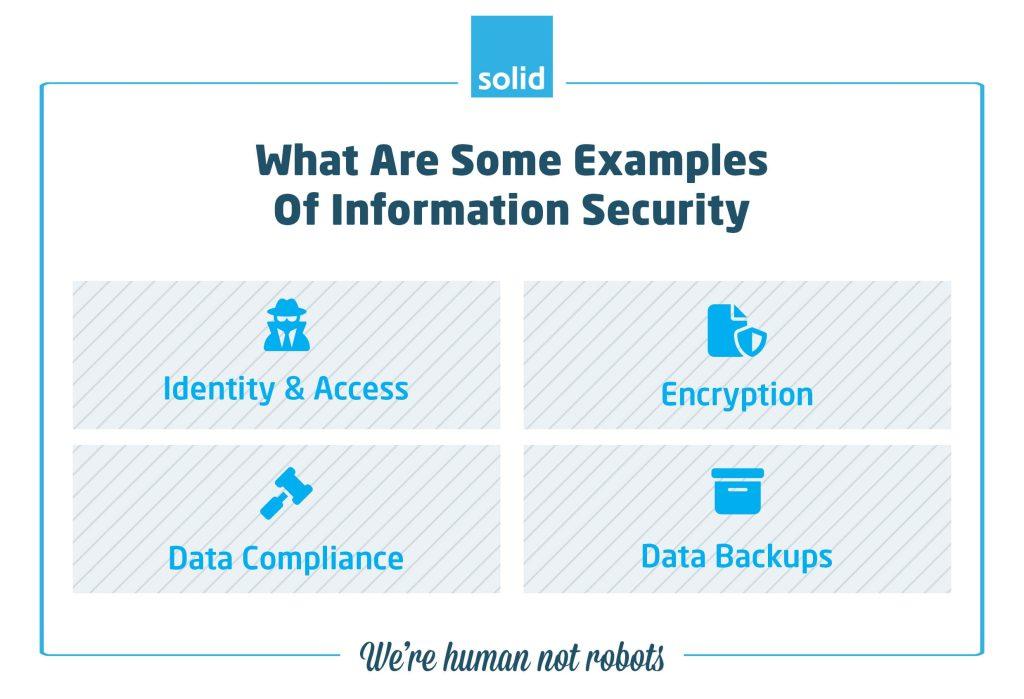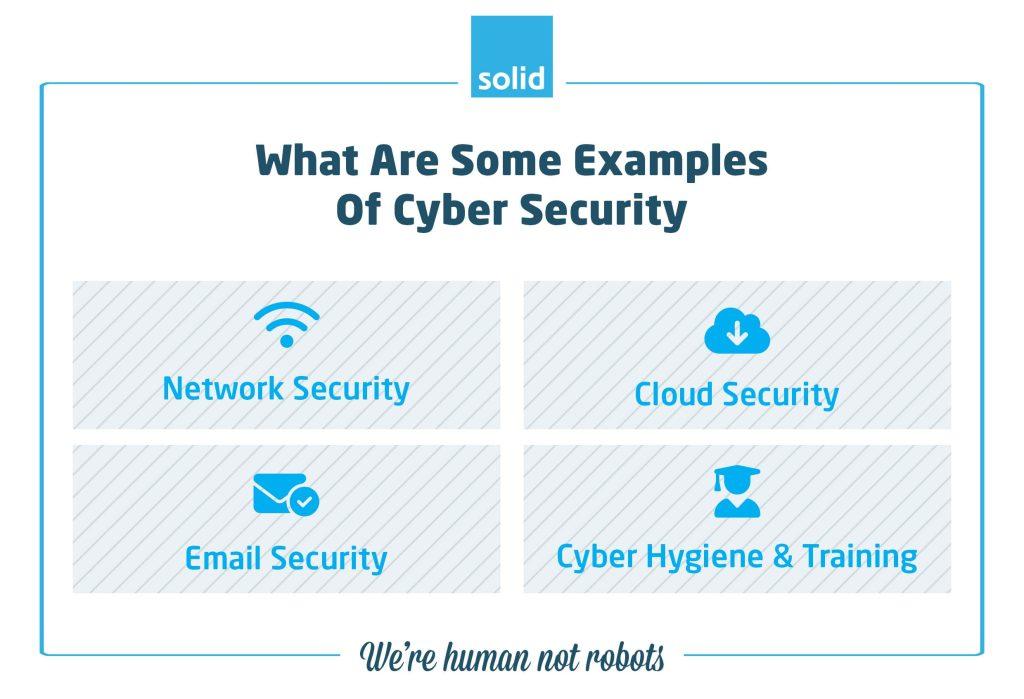
Technology is a sector which many businesses struggle to understand. And it doesn’t help that the industry is filled with technical terms, acronyms and jargon that seems to be interchangeable to those outside of IT. A perfect example of this is the confusion caused by information security vs cyber security. Are they two phrases for the same concept? Does one fall under the other? And should you be lumping them together in your business strategy, or keeping them separate?
Let’s take a deep dive into these two terms, the difference between cyber security and information security, some examples of each, and how you can ensure that you’re making the right decisions for both.
What Is Information Security?
Let’s start off by answering the question of what is information security, or data security as it’s sometimes referred to. Information security is a concept that has been around for almost as long as humans have been doing business. The information being protected can range from customer details and financial data, to intellectual property and confidential details about the way your business operates. And, of course, this data hasn’t always been intertwined with technology. But the growth of the IT sector has seen businesses recognising the benefits of technology, and adopting technical solutions to store, access and protect their data.
In today’s digital world, information security is an overarching term for the solutions that businesses are putting in place to ensure that their data – made up of both digital and physical copies – remains confidential, keeps its integrity, and is available to those who need it. These are the three foundational principles behind data security, and making sure that your information is backed up, kept safe, and remains accessible as needed will help you to ensure your business’ continuity, even if a data disaster does strike.
What Are Some Examples Of Information Security?

Because so much data has become digital, most information security techniques that businesses use are digitally focussed. But the concepts behind these techniques can be applied to information that is printed and stored on-site as well. Let’s take a look at just a few of them:
• Identity And Access Management
Identity and Access Management, or IAM, is all about ensuring that the right people, and only the right people, have access to the data that they need to work effectively. No more, no less. Tools like Microsoft Entra ID (formerly known as Azure Active Directory) help businesses to set up users, login credentials, permissions for both individuals and teams, and extra security features like Multi-Factor Authentication to accomplish this. But it’s not just the setup that a tool like Microsoft Entra ID manages. It can also track user logins and actions, creating a profile of what normal activity looks like, and make it easier to pre-emptively detect potential attacks when unusual activity arises.
• Encryption
A technique as old as war, encryption is about protecting data by hiding it behind codes and ciphers. It just so happens that modern technology makes this far easier to accomplish in second, and very difficult (though still not impossible) to break. Encrypting confidential or critical information and communications has become so simple, it can be done with the click of a button, which is why it has become standard procedure for companies around the world to encrypt files, emails and more.
• Data Compliance
Keeping personal data safe may sound like a technique that most businesses would naturally follow, but the improper handling of personally identifiable information has led to a rise in SPAM, phishing mails, cold calls and the like. Which in turn has directly led to regulations being put in place over the past few years that dictate how companies can gather, process, store and delete personal data. And while adhering to South Africa’s POPI Act or Europe’s GDPR may be a rigmarole at first, compliance with the regulations boosts your data security overall, reduces the risk of attack, and lessens the impact on business operations if one does occur.
• Data Backups
Cloud storage and virtual machines have made it significantly easier for businesses to store multiple copies of their information, at a relatively low cost, and protect it from a wide range of potential disasters including natural ones like floods and fire, and digital ones like ransomware attacks. Data backups substantially reduce the risk of business operations grinding to a halt if disaster does strike, especially when incorporating regular backups into a comprehensive Disaster Recovery Plan.
What Is Cyber Security?
Now that we have a good idea of what information security is and a few of the techniques that are used in protecting company data, let’s have a look at the other side of the coin and delve into the question of what is cyber security.
Cyber security is another overarching term for the steps that businesses and individuals take to protect themselves, their devices, their services and solutions, their communications, and their data when operating online.
Because more businesses are embracing digital solutions, so digital crime has risen as cybercriminals take advantage of vulnerabilities and gaps in understanding, knowledge and awareness. This places businesses at risk of attack unless they put cyber security techniques in place to ensure that their operations run smoothly, and their services are regularly updated, upgraded, and effectively maintained. And because cyber threats often leverage gaps in knowledge, training is a critical factor in keeping your business protected against cyberattacks.
What Are Some Examples Of Cyber Security?

Cyber security is such a broad term, that there are numerous security techniques that fall under its umbrella. Any digital services or solutions that a business uses need to be protected, after all, or they could become a vulnerability that an attacker can exploit. Let’s take a look at just a few of the areas that cyber security focuses on:
• Network Security
Keeping your network safe has become ever more challenging in an age where remote and hybrid work environments are more popular than ever, and more and more humans are using their own devices to work. And that’s not even taking into consideration the increase in the number of devices that people use on a daily basis. Suddenly it’s not just a single desktop that needs network access, but a desktop, a laptop, a smart phone, a tablet and a watch. It’s no wonder that companies are developing Bring Your Own Device policies. Even your office fridge is asking to connect to your Wi-Fi! Keeping track of the devices that are accessing your network and the apps that they are using has become a significant challenge for IT teams, making it difficult to ensure that hardware and software are kept up to date, patched and maintained, and seeing an increase in shadow IT.
• Cloud Security
Cloud services offer plenty of benefits to the businesses that use them, but ensuring that they are maintained is a challenge all on its own, especially when many companies don’t have a clear understanding of the differences between cloud storage and cloud backup, OneDrive and SharePoint, Microsoft 365 and Azure, for example. The result is data being stored incorrectly, duplicated unnecessarily and multiple entry points for attacks if not effectively controlled and secured.
• Email Security
Email is an inherently insecure platform. It was never designed for use by just about everyone in the world, and this makes protecting it incredibly difficult. Attackers are constantly finding new ways to exploit vulnerabilities in email communications through phishing, spoofing and infiltrating addresses, and using he platform to con unsuspecting users or gain access to confidential information which they can then manipulate, distort, or hold to ransom.
• Cyber Hygiene And Training
Every one of your humans has a role to play in keeping your business safe. Cyber hygiene is all about the small steps that your business and your team members can take to protect devices, login credentials and more. Training your humans on best practices for your cyber security and cyber awareness will go a long way towards ensuring that your teams are as well prepared as possible to keep your company protected.
Why Do You Need Both Information Security And Cyber Security (And What Are The Differences Between Them)?
Now, let’s get back to the question of information security vs cyber security, and which one you should be using to protect your business.
While some cyber security techniques are designed to protect your information, not all of your data is going to be digital. This is why businesses need to have both information security policies and cyber security policies in place, to ensure that every aspect of their operations is secured against threat.
Only focussing your efforts on cyber security has the potential to put physical information at risk, but it also won’t necessarily take data storage considerations into account. Data that is stored on hard drives and servers that are not necessarily being accessed online via cloud platforms may not be factored into a cyber security plan, and this has the potential to see a business losing critical data to a disaster, or falling foul of compliance regulations, resulting in penalties under POPIA and GDPR. And focussing solely on information security can also be risky, as it places your business at risk of cyberattacks.
Both areas are critical to the success and security of your business as a whole, and both need to be adopted into your overall technology planning and management strategies.
How Have Information Security And Cyber Security Evolved?
As the world has shifted towards digital, so businesses have been adopting and embracing digital tools to operate more effectively and efficiently, and to allow their humans to work more productively. But attackers are working just as fast to find ways of infiltrating these tools and solutions. Where once it may have been enough to put a strategy in place for protecting your data and users and letting it run its course, now best practices are constantly shifting, and your information and cyber security techniques need to be regularly reviewed and easily adapted to the latest threats that your business faces. It’s not enough to react to an attack as and when it might occur. Your company’s continuity relies on you being proactive, and taking steps to ensure that your business and humans are prepared for a wide range of security scenarios.
How Can You Measure Your Security?
Your level of security may seem like a metric that’s difficult to gauge. And it would be if you were only considering it on your own. There are a number of companies that offer cybersecurity ratings, but at Solid Systems, we have been working with businesses around the world to maximise their protection. And we’ve developed a SOLID Systems Review that we use to understand a business’ existing technologies and security solutions, identify gaps, vulnerabilities, and areas of improvement, and help companies to develop strategic technology plans for addressing security concerns while also helping them to meet and exceed their goals.
Are you ready to see how your business compares to the SOLID Standard? Contact [email protected] today to request a SOLID Systems Review.
Are There Other Ways That Solid Systems Can Help?
Security is just one of the many areas that we specialise in at SOLID. If you’re looking for IT Outsourcing, a Managed IT Services Provider, exceptionally human IT Support, or just want to work with an IT company in South Africa and abroad that will see your business stepping into the future with confidence, get in touch with us, or schedule a free consult.
Frequently Asked Questions (FAQs)
While these two terms may sound the same, cyber security and information security are in fact two different areas that companies need to prioritise when it comes to their overall security planning. It’s not a case of either-or. Businesses need to invest in both cyber security and information or data security, since only focussing on one of the two areas will leave gaps and vulnerabilities that attackers can exploit, or that could be compromised if a disaster strikes.
The main difference between the two concepts is the areas that they focus on. Where information security focuses on protecting your business data, both in the cloud and on-premises, cyber security focuses on protecting your devices and users. And where information security is about managing the confidentiality, availability and integrity of your data through managing identities, permissions, backups and encryptions, one of the best cyber security techniques is training your humans to increase cyber awareness and ensure that they are following security best practices.
Popular Searches
- Internal IT Threats
- Threats To Cybersecurity In Banking
- Man in the Middle Attack
- Mobile Device Management
- Protect Your Business Against IoT Cyber Attacks
- Common Types of Cyber Attacks
- Common Cyber Security Challenges
- Facts About Cyber Security
- Types Of IT Security
- Endpoint Security Benefits
- Cloud Security Threats





